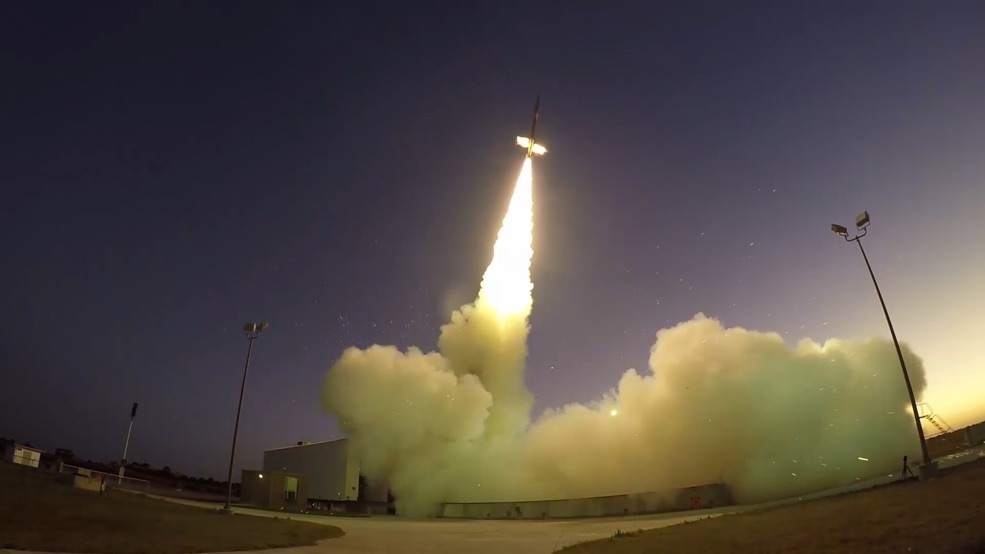Watch Mars 2020 Rover's Parachute Successfully Unfurl in Test Flight (Video)
Amazing new video of a Mars-bound parachute shows the special device falling through the atmosphere faster than the speed of sound.
The parachute is being designed to slow down NASA's Mars 2020 rover when it begins its descent through the Martian atmosphere at more than 12,000 mph (19,300 kilometers per hour).
The agency launched a parachute-testing series in October, called the Advanced Supersonic Parachute Inflation Research Experiment (ASPIRE). The footage is from a flight in Earth's upper atmosphere that started with an Oct. 4 rocket launch from the NASA Goddard Space Flight Center's Wallops Flight Facility in Virginia. [How NASA's Mars 2020 Rover Will Work (Infographic)]
"It is quite a ride," Ian Clark, the test's technical lead from NASA's Jet Propulsion Laboratory in California, said in a statement. "The imagery of our first parachute inflation is almost as breathtaking to behold as it is scientifically significant. For the first time, we get to see what it would look like to be in a spacecraft hurtling towards the Red Planet, unfurling its parachute."
The parachute (which was contained in a payload that also had a deployment mechanism and instruments to record data) was launched at an altitude of 32 miles (51 km) above Earth — that's about halfway to the Kármán line that traditionally denotes the edge of space. But the payload didn't deploy until the rocket's altitude fell to 26 miles (42 km).

The parachute was shot out of the payload container at over 100 mph, according to the video from NASA. When the parachute becomes fully deployed, the system is traveling at 1.8 times the speed of sound, or nearly 1,300 mph (2,090 km/h), according to the statement. The speed of sound changes at different elevations, but it is 761.2 mph, or 1,225 km/h, at sea level.) The parachute exerts over 35,000 pounds of drag force that will be used to slow down the Mars2020 payload.
Get the Space.com Newsletter
Breaking space news, the latest updates on rocket launches, skywatching events and more!
The parachute system splashed down successfully in the Atlantic Ocean 35 minutes after launch.
"Everything went according to plan or better than planned," Clark said. "We not only proved that we could get our payload to the correct altitude and velocity conditions to best mimic a parachute deployment in the Martian atmosphere, but as an added bonus, we got to see our parachute in action as well."
The Mars 2020 rover is similar to the Curiosity rover on Mars, which landed in Gale Crater in 2012 in search of habitable environments. The newer mission, however, has more advanced cameras and instruments and will also look for signs of ancient Martian life. The rover will cache some of the more promising soil and rock samples for a possible future sample-return mission to Earth.
The parachute for Mars 2020 is almost identical to the one used for Curiosity, according to the statement. But more ASPIRE testing is planned, including another launch in February 2018. NASA plans to test an even stronger parachute that could be used in future Martian missions, officials said in the statement.
Follow us @Spacedotcom, Facebook and Google+. Original article on Space.com.
Join our Space Forums to keep talking space on the latest missions, night sky and more! And if you have a news tip, correction or comment, let us know at: community@space.com.

Elizabeth Howell (she/her), Ph.D., was a staff writer in the spaceflight channel between 2022 and 2024 specializing in Canadian space news. She was contributing writer for Space.com for 10 years from 2012 to 2024. Elizabeth's reporting includes multiple exclusives with the White House, leading world coverage about a lost-and-found space tomato on the International Space Station, witnessing five human spaceflight launches on two continents, flying parabolic, working inside a spacesuit, and participating in a simulated Mars mission. Her latest book, "Why Am I Taller?" (ECW Press, 2022) is co-written with astronaut Dave Williams.









